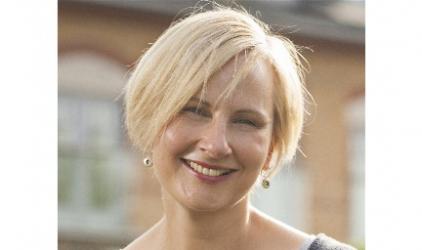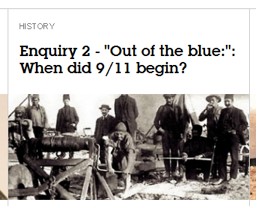‘We don’t actually know what happened’: Pupils’ Understanding of 9/11 and Its Wider Context Ten Years On (Alison Kitson)

In September 2011, ten years after the terrorist attacks on the US known throughout the world simply as 9/11, a new web-based educational resource was launched in the UK to support teachers and their students in learning about the attacks (see http://since911.com/schools). The project was funded by a small London-based charity and directed by the UCL Institute of Education. Prior to the development of the website, research was carried out across eight large secondary (11-18 years) schools across England in 2010-11. Here I will report on some project findings from 13 group interviews with 65 students aged 13-15 years.
The data from the student interviews were analysed in two ways, first to discern any patterns in students’ substantive knowledge of 9/11 (when it happened, where, who was involved and why it happened) and second to analyse the responses in terms of three main dimensions of historical thinking. For the latter, I adapted Levesque’s work (from “‘Bin Laden is responsible; it was shown on tape’: Canadian High School Students’ Historical Understanding of Terrorism,” Theory & Research in Social Education, 31:2, 174-202) and focused on three areas: perspective recognition/similarity and difference; cause and consequence; evidence/provisionality. I will focus here on the students’ substantive knowledge but a fuller analysis of all aspects of the research will be published in due course.
Factual knowledge of what happened on the day was surprisingly good given that the students had not learnt about it routinely in UK schools and were only about four years old when it happened. They knew it happened in America, that it involved the Twin Towers in New York and, when given a range of dates and numbers of fatalities, were generally correct in their choices. The term ‘terrorist’ was used in most of the group interviews without any prompting and a small number of students displayed some impressive wider contextual knowledge, for example by drawing comparisons with the IRA or America’s previous foreign policy.
However, when the discussion turned to the causes of 9/11, more serious gaps in the students’ knowledge were exposed. These gaps fell into three categories: people, geography and chronology. Students generally knew who George Bush was; they were less certain about Osama bin Laden and Saddam Hussein. A common problem was uncertainty about whether Al Qaeda was a person or a group. Geographically, students found it hard to distinguish between Iraq and Afghanistan and they characterised the Middle East as a single entity harbouring vast oil reserves (generally wanted only by the US). Sarah, for example, was especially confused, suggesting that ‘wars in Vietnam or Pakistan’ were causes of 9/11. Perhaps the most serious gap in knowledge, however, was chronological. It was extremely common for the students to believe that 9/11 was in response to wars in Iraq and Afghanistan that nurtured the misconception that 9/11 was purely an act of revenge.
were less certain about Osama bin Laden and Saddam Hussein. A common problem was uncertainty about whether Al Qaeda was a person or a group. Geographically, students found it hard to distinguish between Iraq and Afghanistan and they characterised the Middle East as a single entity harbouring vast oil reserves (generally wanted only by the US). Sarah, for example, was especially confused, suggesting that ‘wars in Vietnam or Pakistan’ were causes of 9/11. Perhaps the most serious gap in knowledge, however, was chronological. It was extremely common for the students to believe that 9/11 was in response to wars in Iraq and Afghanistan that nurtured the misconception that 9/11 was purely an act of revenge.
The students brought with them sets of assumptions that, despite often being based on flimsy sources, they held onto tenaciously. Amongst these assumptions was an anti-American bias, the force of which was surprising: George Bush was often cast as a villain and the sense that 9/11 was (sometimes exclusively) America’s fault was not at all uncommon. Michael, for example, claimed that, “America does have a history of just hanging around waiting for someone to point the gun at and just later finding a reason to do it.” Some students had encountered conspiracy theories about the involvement of the US in the attacks that helped to fuel this anti-Americanism.
Religion was also identified as a key cause of 9/11 but there was confusion and some bewilderment about this. Some students argued that all terrorism was motivated by religion whilst others suggested that religion was a front for other, more political motives.
The point is not that the students’ lack of knowledge was shocking – why should we expect them to know anything much when they have not been taught this in schools? Instead, my point is that they knew – or thought they knew – a surprising amount about the broader context and causes of 9/11 through their access to the Internet and other media. This makes it much more likely that they will bring pre-conceptions into the classroom which may act as a barrier to an open-minded consideration of context, causation and perspectives. Effective teaching, we argue, needs to engage with these pre-conceptions in order to make possible more sophisticated analyses of 9/11, its causes and its consequences.

